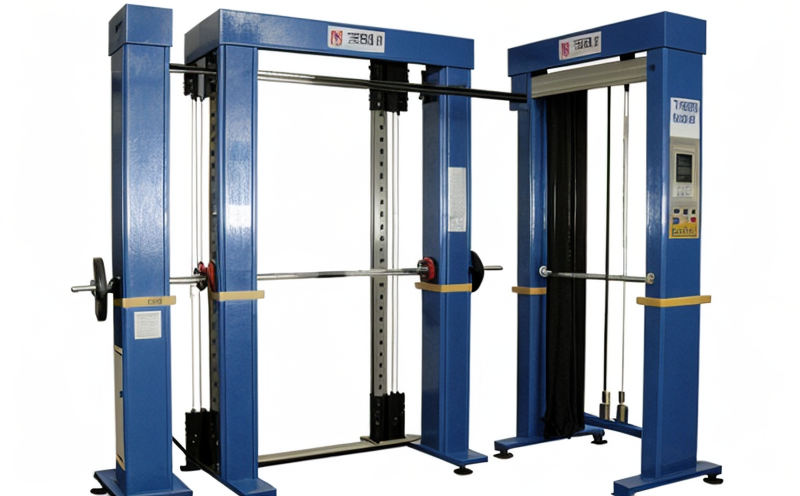EN ISO 13938 Bursting properties of fabrics
The European Standard EN ISO 13938 specifies a method to determine the bursting strength and tear resistance of woven, nonwoven, and knitted fabrics. This test is essential for ensuring that textile products meet the required durability standards in various sectors such as automotive interiors, medical devices, and aerospace components.
Bursting strength testing evaluates how much force can be applied before a fabric fails under pressure. The test involves clamping a specimen between two plates with progressively increasing pressure until it bursts. This method provides critical insights into the tensile properties of fabrics, which are crucial for applications where textiles come into direct contact with high-pressure systems.
The standard is particularly relevant in industries that demand high-performance materials capable of withstanding extreme conditions without compromising safety or functionality. For example, automotive manufacturers use this test to ensure seat covers and airbag coverings can withstand the forces generated during a crash. Similarly, medical device companies rely on bursting strength tests to verify the integrity of surgical drapes and gown fabrics.
The methodology outlined in EN ISO 13938 is stringent yet straightforward. Specimens are cut into specific dimensions based on the type of fabric being tested (woven, nonwoven, or knitted). The specimen is then clamped between two plates, one stationary and one capable of applying pressure. The rate at which this pressure increases can vary depending on the fabric’s expected use, but it typically starts low and gradually increases to reach a predetermined point where the fabric fails.
The testing apparatus used for this procedure includes a hydraulic or pneumatic press with a load cell to measure the force applied during the test. The apparatus must meet precise specifications laid out in the standard to ensure accurate results. Calibration of the equipment is crucial, and regular checks should be performed to maintain accuracy over time.
The burst pressure measured during the test indicates the fabric’s resistance to sudden puncture or tearing under pressure. This value can vary widely depending on factors like fiber type, yarn count, weave structure, and finish applied to the fabric. Understanding these variables helps manufacturers tailor their production processes to meet specific performance requirements.
Reporting of results from EN ISO 13938 tests involves documenting the burst strength achieved for each specimen along with any relevant observations about the failure mode (e.g., whether it tore or punctured). These data points are vital inputs for quality control departments and R&D teams working on improving product performance.
In summary, EN ISO 13938 is a critical tool in ensuring that textiles used in high-stress environments maintain their integrity. By accurately measuring bursting strength, this standard helps prevent potential failures in end products, enhancing overall safety and reliability across numerous industries.
Why It Matters
Bursting strength testing is fundamental for several reasons, particularly when dealing with fabrics that are subjected to mechanical stress or high-pressure conditions. For instance, automotive interiors need materials robust enough to withstand the forces generated during collisions without compromising safety. Similarly, medical devices require fabrics capable of maintaining their structural integrity under pressure, especially in sterile environments.
From a quality control perspective, consistent bursting strength testing ensures that every batch of fabric produced meets the highest standards. This consistency is essential for maintaining brand reputation and customer trust. In industries where even minor defects could lead to significant consequences (such as healthcare or aerospace), such precision becomes indispensable.
Moreover, understanding how different variables affect bursting strength allows manufacturers to optimize their processes continuously. For example, adjusting yarn count or changing the weave pattern can significantly impact test results. By leveraging this knowledge, companies can innovate and develop new materials with enhanced performance characteristics tailored specifically for demanding applications.
In addition to enhancing product quality, consistent adherence to standards like EN ISO 13938 also facilitates easier compliance with regulatory requirements. Many sectors operate under strict guidelines regarding material safety and performance; having reliable test data supports seamless integration into global supply chains without compromising on quality standards.
Eurolab Advantages
At Eurolab, our commitment to excellence in textile testing is unmatched. With state-of-the-art facilities equipped with the latest instrumentation, we offer accurate and reliable bursting strength tests according to EN ISO 13938.
- Accurate Results: Our calibrated equipment ensures precise measurements of burst pressure, providing you with dependable data for decision-making purposes.
- Comprehensive Reporting: Beyond just the burst strength value, our reports include detailed observations about specimen behavior during testing, offering valuable insights into material performance.
- Expertise: Our team of highly qualified professionals understands all aspects of textile testing and can provide expert advice based on test outcomes.
- Regulatory Compliance: We stay up-to-date with the latest standards and guidelines, ensuring that our services align perfectly with international requirements.
- Efficiency: Leveraging modern technology allows us to process samples quickly while maintaining high-quality results.
- Custom Solutions: Tailored approaches for unique testing needs ensure comprehensive coverage of your specific requirements.
Choose Eurolab for all your textile testing needs, knowing that you are partnering with a leader in the field dedicated to delivering excellence.
Competitive Advantage and Market Impact
Adhering strictly to EN ISO 13938 provides textile manufacturers with a significant competitive edge by ensuring that their products consistently meet the highest quality standards. In markets where safety and reliability are paramount, such as automotive or medical devices, having reliable bursting strength data can make all the difference.
- Enhanced Reputation: Consistent performance across batches builds trust among customers and partners.
- Better Decision-Making: Accurate test results enable more informed decisions regarding material selection and process optimization.
- Innovation Opportunities: Understanding burst strength characteristics opens up avenues for developing innovative products with superior performance.
- Increased Efficiency: Streamlined testing processes reduce lead times, allowing quicker market entry.
By embracing this standard and leveraging the insights gained from it, companies can better position themselves in competitive markets while contributing positively to industry standards.





